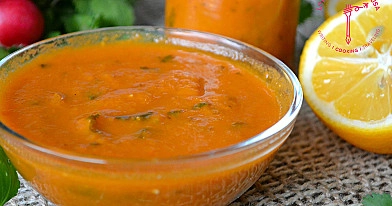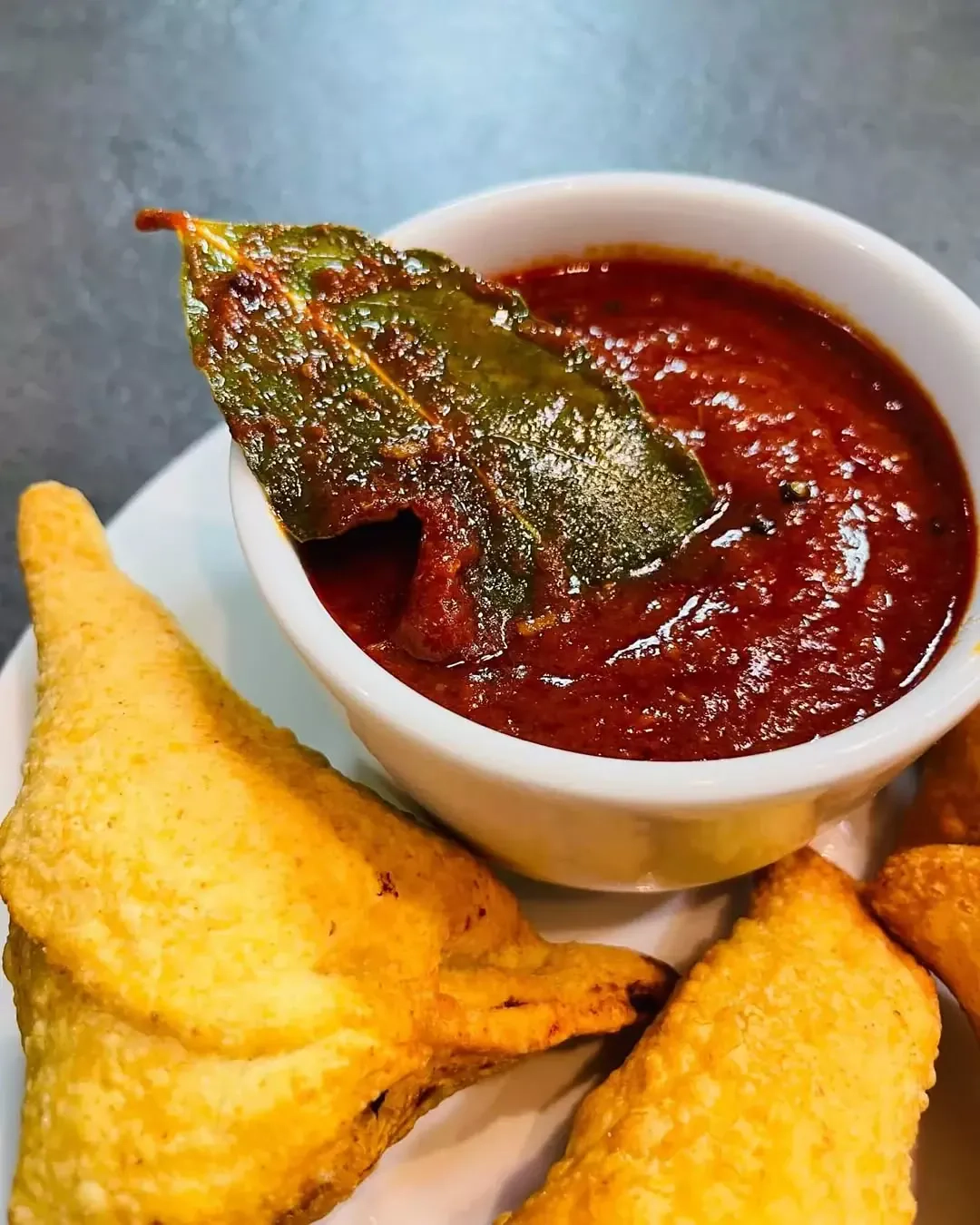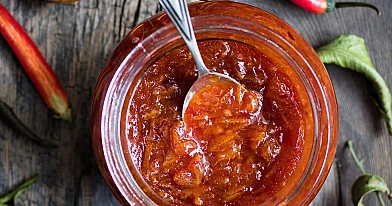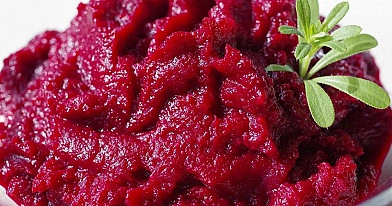
Old fashioned green tomato and apple chutney

Green tomato chutney is one of those timeless recipes that families have passed down for generations, especially in the late summer and early autumn when gardens are overflowing with unripened tomatoes. Unlike classic red tomato preserves, this chutney uses firm green tomatoes, paired with apples, onions, and warming spices to create a deeply flavorful condiment. It is tangy, slightly sweet, and full of complexity, making it the perfect companion for cheese boards, roasted meats, cold cuts, or even simple sandwiches.
In my own kitchen, I learned to prepare this recipe from my grandmother, who made it every year to use up the last tomatoes from her garden. The aroma of simmering vinegar, apples, and spices filled the house and signaled the arrival of autumn. I have tested this recipe many times, adjusting it slightly to balance the sweetness and tanginess, and I can confidently say it works beautifully every time. This old fashioned green tomato and apple chutney not only preserves seasonal produce but also brings warmth and tradition to your table.
Advertisement
Possible ingredient alternatives
- Green tomatoes: If you cannot find green tomatoes, you may substitute with firm underripe red tomatoes or tomatillos for a slightly sharper flavor.
- Apples: Use firm cooking apples like Granny Smith, but pears can also be used if you prefer a softer, sweeter chutney.
- Onions: Yellow onions are traditional, but red onions add a slightly milder, sweeter flavor.
- Vinegar: Malt vinegar gives a classic taste, but cider vinegar or white wine vinegar can be used for a lighter acidity.
- Sugar: Brown sugar adds richness, but white sugar or even honey can be used for a different sweetness profile.
- Spices: Mustard seeds, ground ginger, and cinnamon are traditional, but you can add chili flakes for extra heat.
Cooking tips for the chutney
- Always cook chutney slowly over low heat so the flavors develop gradually.
- Stir regularly to prevent the mixture from sticking to the bottom of the pan.
- Test the consistency by running a spoon through the chutney — it should leave a trail that closes slowly.
- Sterilize your jars before filling to ensure the chutney keeps well for months.
- Let the chutney mature for at least 4 weeks in sealed jars to allow the flavors to blend fully.
Chef’s advice
When making chutney, patience is key. Rushing the cooking process can result in underdeveloped flavors or an uneven texture. A heavy-based pan will help prevent burning, and using a wooden spoon ensures gentle stirring without damaging the ingredients. Remember that chutney is meant to taste bold and balanced — don’t be afraid of vinegar’s sharpness at first; it mellows beautifully during maturation.
Ingredients
- Green tomatoes: 1.5 kg (about 3.3 lbs).
- Cooking apples: 500 g (about 1.1 lbs).
- Onions: 500 g (about 1.1 lbs).
- Seedless raisins: 250 g (about 8.8 oz).
- Brown sugar: 500 g (about 2 ½ cups).
- Malt vinegar: 600 ml (about 2 ½ cups).
- Salt: 1 tbsp.
- Ground ginger: 1 tsp.
- Mustard seeds: 1 tsp.
- Ground cinnamon: 1 tsp.
- Black pepper (freshly ground): ½ tsp.
~6 medium jars:
- 1. The green tomatoes are washed thoroughly, then chopped into small, even pieces to ensure they cook evenly. Apples are peeled, cored, and diced, while onions are finely sliced to release their natural sweetness.
- 2. A large, heavy-based pan is placed on the stove, and all the chopped tomatoes, apples, and onions are combined with the raisins. The mixture is given a gentle stir to distribute everything evenly.
- 3. Vinegar is poured into the pan, and the sugar is added. As the pan warms, the sugar gradually dissolves into the vinegar, creating a sweet-and-sour base. The spices — mustard seeds, ground ginger, cinnamon, salt, and pepper — are sprinkled in, ensuring every spoonful of chutney will be flavorful.
- 4. The pan is brought slowly to a boil, then the heat is reduced immediately to a gentle simmer. The chutney is left to bubble quietly, uncovered, for about 1 hour 30 minutes. From time to time, the mixture is stirred with a wooden spoon to prevent sticking.
- 5. As the chutney thickens, the aroma becomes rich and tangy. To check consistency, a wooden spoon is drawn across the bottom of the pan — if the line holds for a moment before closing, the chutney is ready.
- 6. Meanwhile, glass jars are sterilized in the oven at 120°C (250°F) for about 15 minutes, or by boiling in hot water. Lids are kept hot and clean until ready to use.
- 7. The chutney, while still hot, is carefully ladled into the prepared jars. Each jar is filled almost to the top, then sealed tightly.
- 8. The jars are allowed to cool completely at room temperature before being stored in a cool, dark cupboard. For the best flavor, the chutney should be left to mature for at least 4 weeks.
Recipe Directions
FAQ
How long should green tomato and apple chutney mature before eating?
Although the chutney is safe to eat immediately after cooking, it is best allowed to mature for at least 4 weeks in sealed jars stored in a cool, dark place. During this resting time, the sharpness of vinegar mellows, and the spices blend harmoniously with the sweetness of apples and sugar. This traditional waiting period is well known among experienced home preservers, as the flavor improves noticeably over time. From my own tested batches, the chutney develops its richest balance of tangy and sweet notes after 6–8 weeks of maturing.
Can this chutney be made gluten-free or lactose-free?
Yes, this chutney is naturally lactose-free because it contains no dairy products. It can also be gluten-free if you choose the right vinegar. Traditional malt vinegar is made from barley, which contains gluten, so anyone with celiac disease or gluten sensitivity should replace it with cider vinegar or white wine vinegar. These alternatives not only make the recipe safe but also give a lighter, fruitier acidity that blends well with apples and green tomatoes. As a tested variation, I often use cider vinegar when preparing a jar for friends who follow a gluten-free diet.
How should I store green tomato chutney, and how long does it keep?
Once cooked and sealed in sterilized jars, chutney should be stored in a cool, dark cupboard or pantry. Properly sealed jars will keep for up to 12 months without losing quality. After opening, the jar must be kept in the refrigerator, tightly closed, and consumed within 4–6 weeks. This storage method is standard in professional preserving practices, and I can confirm from my own kitchen experience that chutney stored under these conditions maintains both flavor and safe texture for many months.
Is it possible to freeze green tomato and apple chutney?
While chutney is usually preserved in jars, it can also be frozen in airtight containers if needed. Freezing will not spoil its flavor, but the texture may become slightly looser after thawing. To maintain quality, freeze the chutney in small portions, thaw in the refrigerator overnight, and stir well before serving. I tested freezing a small batch once, and although the consistency softened a little, the taste remained vibrant and perfectly enjoyable. This can be useful if you do not have time to sterilize jars but still want to preserve the harvest quickly.
What are the most common mistakes to avoid when cooking chutney?
The most frequent mistake is cooking chutney too quickly. High heat causes uneven thickening and may burn the sugar at the bottom of the pan, leaving a bitter taste. Another common error is failing to sterilize jars properly, which can lead to spoilage even if the chutney tastes fine at first. Some beginners also add too little vinegar, forgetting that acidity is essential for both preservation and flavor balance. Through years of practice, I learned that slow simmering and regular stirring are the best ways to achieve a glossy, thick chutney that will last safely for months.
How can I adjust the texture if my chutney is too thick or too runny?
If the chutney turns out too thick, you can gently stir in a small splash of hot vinegar or water during the last minutes of cooking until the desired consistency is reached. On the other hand, if it is too runny, continue simmering uncovered for an extra 10–15 minutes, allowing excess liquid to evaporate naturally. These adjustments are common even among professional cooks, since water content in tomatoes and apples varies depending on the harvest. I have personally adjusted batches both ways, and the flavors remain intact as long as you make the changes slowly and carefully.



